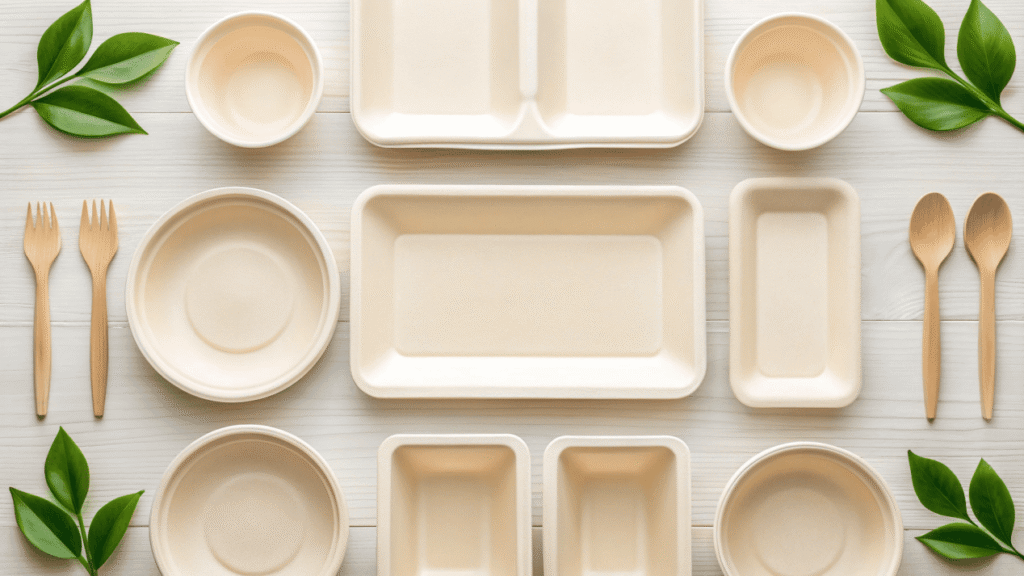You want to be eco-friendly, but you're worried compostable plates are just flimsy, soggy paper. This packaging failure could ruin a customer's meal and your brand's reputation.
Yes, modern compostable-ware is a smart choice. Strong materials like sugarcane bagasse are durable, grease-resistant, and microwave-safe, meeting customer demand for sustainability without sacrificing performance.
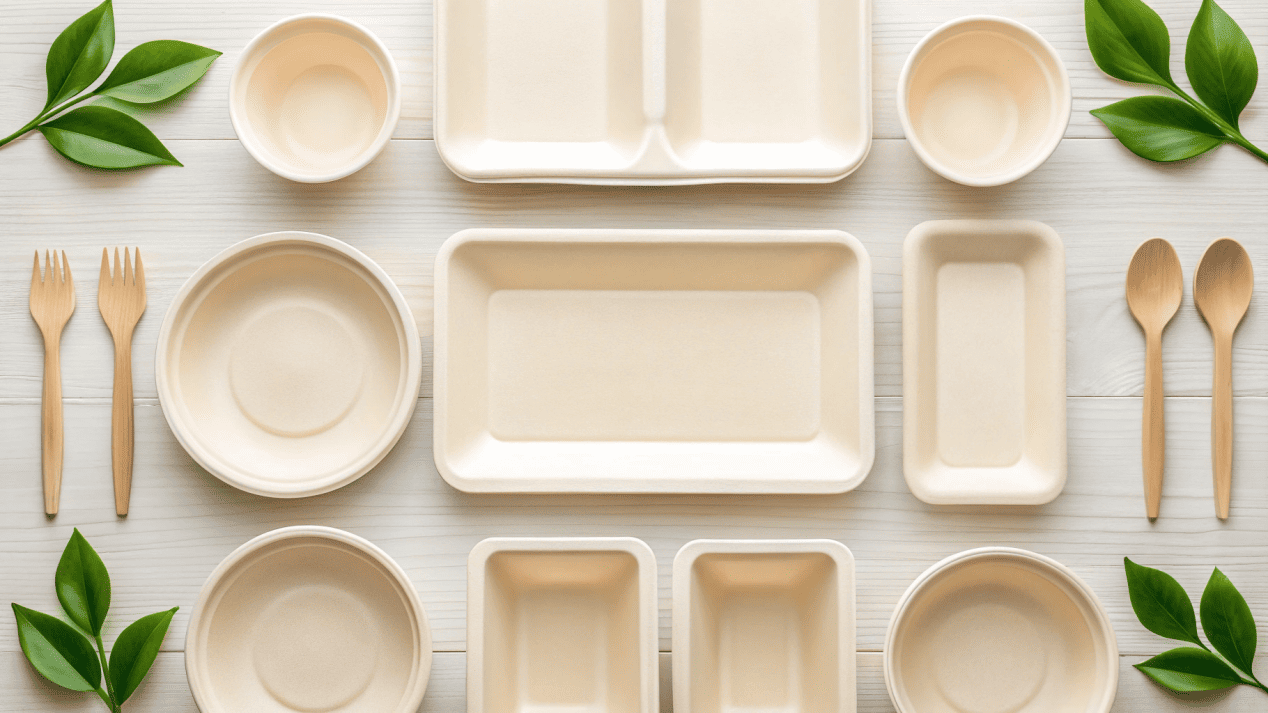
I've been in this industry for a long time, and I remember when "eco-friendly" meant a weak paper plate that would collapse if you looked at it wrong. A client of mine who ran a food truck almost gave up on compostables after a disastrous event where his chili soaked right through the bowls he was using. But technology has changed completely. Today, the compostable products we manufacture are incredibly strong. Making the switch is now one of the easiest ways to improve your brand image and connect with modern customers. Let's walk through what you need to know.
What Kinds of Compostable Bowls and Trays Can You Even Buy?
You think your only compostable option is a standard round plate. This feels limiting and forces you to serve your beautifully crafted food in a boring, one-size-fits-all container.
The variety is huge. You can find everything from multi-compartment trays for meal prep to stylish boat trays for tacos or fries. There is a compostable shape for almost any food you serve.
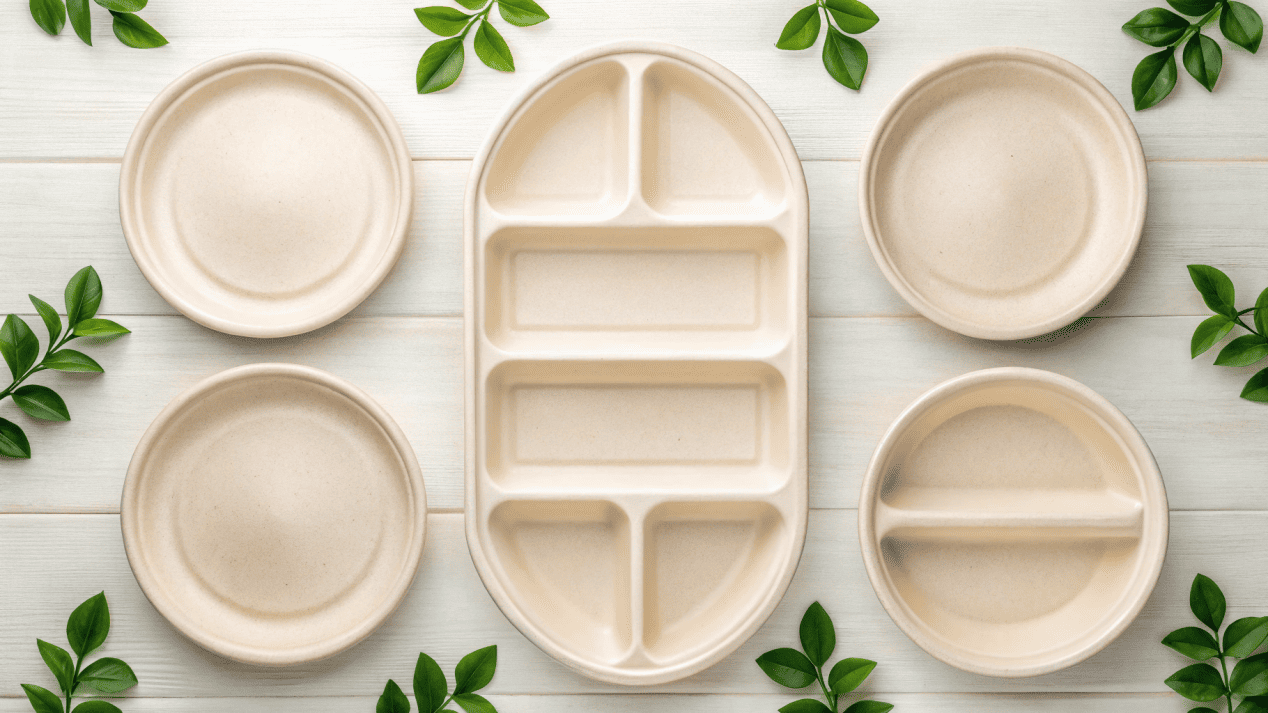
The idea that compostable packaging is just one type of bowl is a thing of the past. I recently helped a catering client completely redesign her service line using only compostable products. She was amazed at the options. We used sleek, rectangular trays for grab-and-go sandwich meals. For her popular build-your-own-taco bar, we used fun boat-shaped trays that held the shells perfectly. For corporate lunches, we chose three-compartment trays to keep the main course, salad, and dessert neatly separated. This didn't just meet her sustainability goals; it elevated the entire presentation of her food. Thinking beyond the round bowl opens up a world of possibilities for better serving your customers and showcasing your menu.
Finding the Right Shape for Your Food
| Product Type | Best For | Why It Works |
|---|---|---|
| Round Bowls | Salads, grain bowls, soups, açai bowls. | A versatile classic, deep enough for liquids and mixed items. |
| Boat Trays | Fries, tacos, hot dogs, nachos. | The curved shape contains messy items and is easy to hold. |
| Rectangular Trays | Sushi, sandwiches with a side, grab-and-go meals. | Offers a clean, modern presentation for plated meals. |
| Multi-Compartment Trays | Meal prep, school lunches, catered meals. | Keeps different food components separate, preserving taste and texture. |
But Are Compostable Bowls Strong Enough for Real Food?
You’re terrified of a customer's hot, saucy meal leaking through their bowl. A single packaging failure can lead to an angry review that damages your reputation forever.
Absolutely. The best material is sugarcane bagasse. It is a molded fiber that is incredibly rigid, cut-resistant, and naturally grease-resistant. Just make sure the product is certified "PFAS-Free."
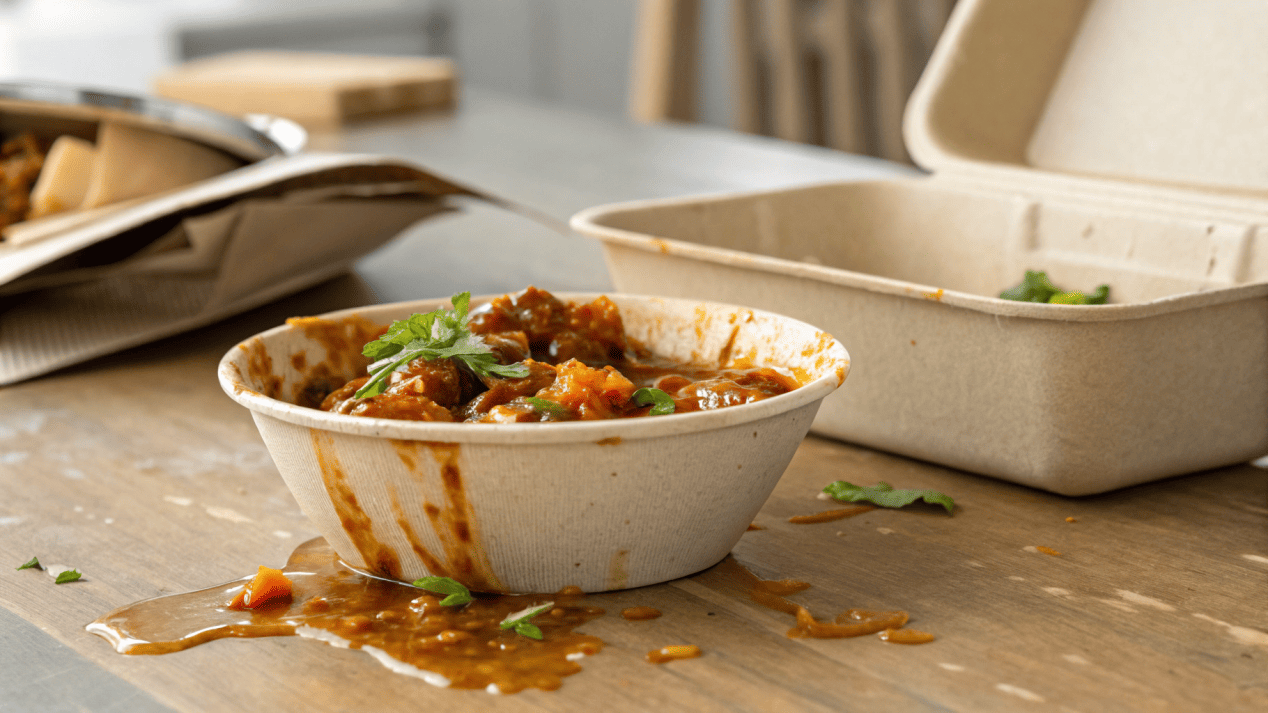
Let's talk about the material science here, because it's what I get most excited about. Sugarcane bagasse is the fibrous pulp left over after sugarcane is crushed for its juice. Instead of being thrown away, we mold this fiber into super-strong containers. It’s not paper; it’s a molded fiber, which gives it incredible rigidity. It can handle hot liquids, oily dressings, and a knife and fork. It's also safe for the microwave and the freezer. However, there's one critical detail you must know about: PFAS chemicals. For years, some manufacturers used these "forever chemicals" to add grease resistance. This is no longer acceptable due to health concerns. When you're sourcing, you must demand a certificate proving the products are "PFAS-Free." This ensures they are truly safe and will be certified compostable by organizations like BPI.
Will My Customers Actually Care If My Packaging Is Compostable?
You see eco-friendly packaging as just another expense on your balance sheet. Meanwhile, your competitors are attracting new customers by showing they care about the environment.
Yes, they care deeply. Using compostable packaging connects with your customers' values, prepares you for plastic bans, and massively improves your brand image. It's a powerful marketing tool.
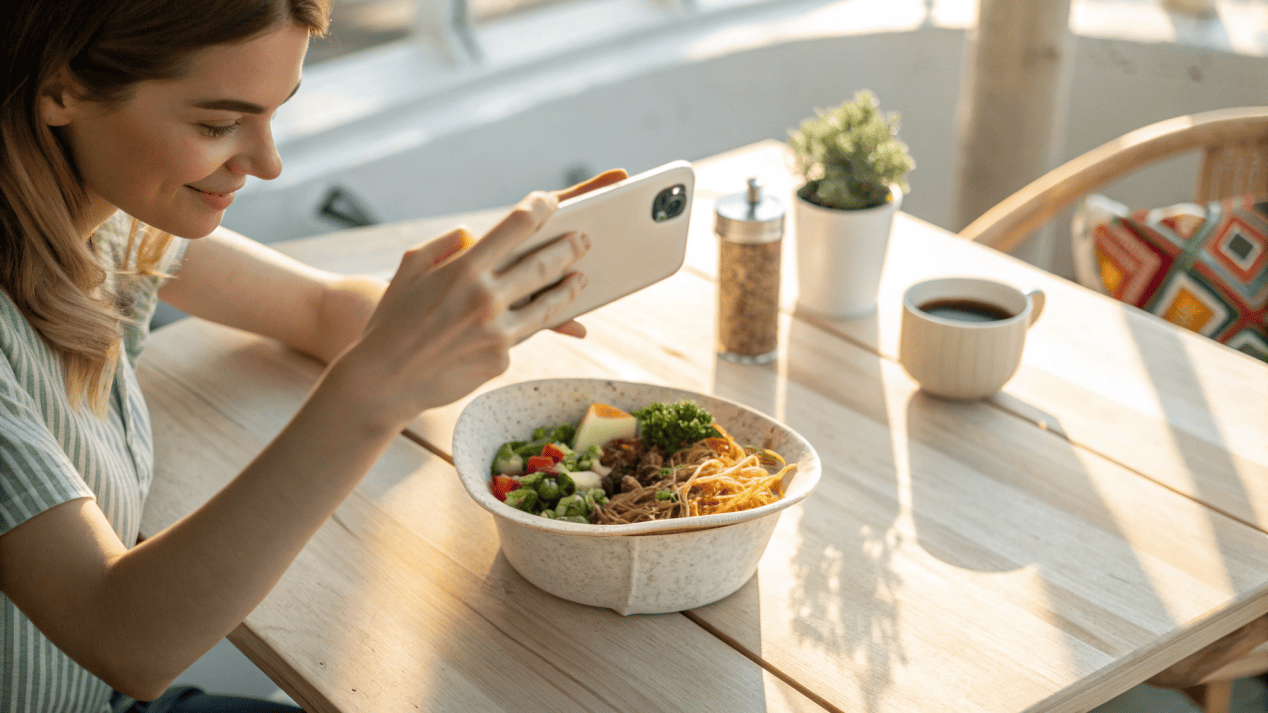
I can tell you from experience, this is no longer a niche "green" issue; it's a mainstream expectation. I worked with a cafe in a downtown area. They switched from styrofoam clamshells to natural kraft-colored bagasse trays. The visual change alone was huge. The packaging looked healthier, fresher, and more premium. Their younger customers immediately noticed and started posting photos of their lunches online—free marketing! This is the "Instagram effect." The earthy, natural look of compostable packaging is visually appealing and signals quality. Beyond marketing, this is also a practical business decision. Cities all over the world are banning single-use plastics and styrofoam. Switching now isn't just about brand image; it's about future-proofing your business. It shows you're a responsible, forward-thinking brand, and customers will choose you over competitors who are stuck in the past.
Where Do You Actually Find a Reliable Supplier for These Products?
You've decided to switch, but you have no idea where to even start looking. Googling "compostable bowls" gives you thousands of confusing options and no clear direction.
You can buy from broadline distributors like Sysco, online wholesalers like WebstaurantStore, or for the best price on large orders, source directly from a manufacturer like me in Asia.
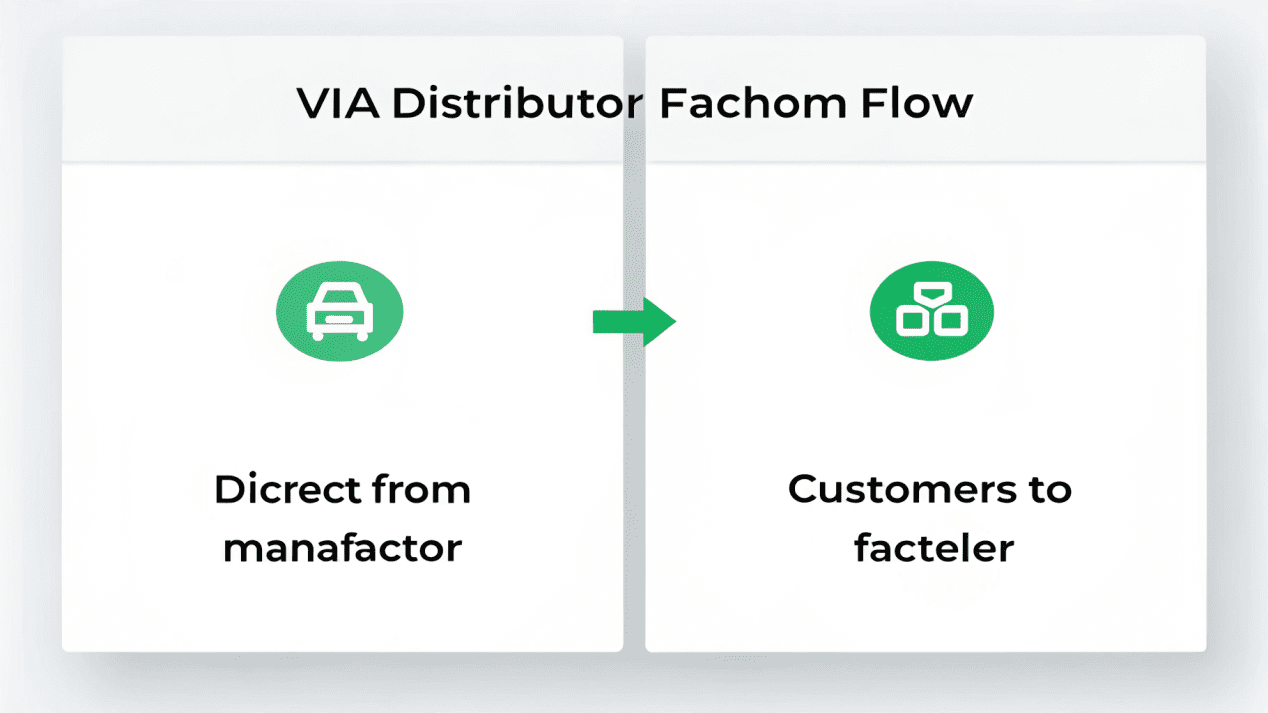
There is no single "best supplier" list because the right choice depends on your business size and needs. I help my clients navigate these options all the time. For a single independent restaurant, going through your existing large foodservice distributor is often the easiest path. For a small, growing chain, an online wholesaler offers great pricing on case quantities. But for large volumes—I'm talking tens of thousands of units or more—sourcing directly from the manufacturer is always the most cost-effective. This is my world. Clients find factories like mine on platforms like Alibaba and then work with us directly. This path requires more planning for lead times and international shipping, but the cost savings are significant.
Your Supplier Options at a Glance
| Supplier Type | Best For | Pros | Cons |
|---|---|---|---|
| Broadline Distributor | Independent restaurants. | Easy, can be added to your regular food order. | Higher price per unit, limited selection. |
| Online Wholesaler | Small chains, savvy owners. | Good pricing, wide selection, fast shipping. | You manage ordering from a separate supplier. |
| Direct from Manufacturer | Large chains, high-volume businesses. | Lowest possible cost per unit, full customization. | Long lead times, requires managing logistics. |
Conclusion
Switching to compostable packaging is no longer optional. It is a smart business move that boosts your brand, meets modern customer expectations, and secures your place in the future of foodservice.
